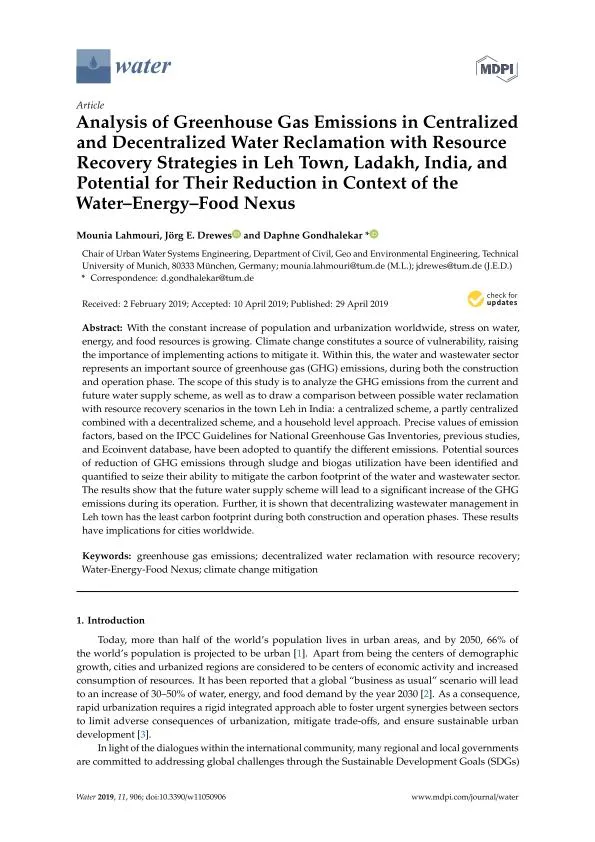With the constant increase of population and urbanization worldwide, stress on water, energy, and food resources is growing. Climate change constitutes a source of vulnerability, raising the importance of implementing actions to mitigate it. Within this, the water and wastewater sector represents an important source of greenhouse gas (GHG) emissions, during both the construction and operation phase. The scope of this study is to analyze the GHG emissions from the current and future water supply scheme, as well as to draw a comparison between possible water reclamation with resource recovery scenarios in the town Leh in India: a centralized scheme, a partly centralized combined with a decentralized scheme, and a household level approach. Precise values of emission factors, based on the IPCC Guidelines for National Greenhouse Gas Inventories, previous studies, and Ecoinvent database, have been adopted to quantify the different emissions. Potential sources of reduction of GHG emissions through sludge and biogas utilization have been identified and quantified to seize their ability to mitigate the carbon footprint of the water and wastewater sector. The results show that the future water supply scheme will lead to a significant increase of the GHG emissions during its operation. Further, it is shown that decentralizing wastewater management in Leh town has the least carbon footprint during both construction and operation phases. These results have implications for cities worldwide.
